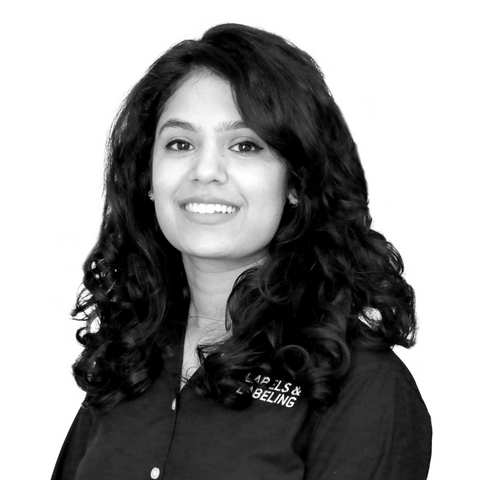Africa: Short runs, significant impact
The African packaging market is on the rise, fueled by a young, urbanizing consumer base and an increasing demand for affordable, smaller-sized packaging options,

The African packaging market is valued at 43.48 billion USD in 2024. It is expected to grow to 52.52 billion USD by 2029, reflecting a CAGR of 3.85 percent over the forecast period (2024-2029), according to a report by Mordor Intelligence.
While South Africa remains the largest market for labels and packaging, foreign investors have been paying close attention to East African nations, particularly Kenya, Ethiopia, Uganda, Rwanda and Tanzania. As previously reported in Labels & Labeling, some economic experts predict that Africa will be the second fastest-growing major economy in the world behind Asia.
The rising number of young consumers is fueling the market, with an increased demand for consumer goods and growing individual incomes, particularly in East and West Africa. Consumers in this region prioritize value, favoring discounted and smaller package options.
Sachen Gudka, managing director of Skanem Interlabels Industries in Nairobi, affirms that the East African packaging industry is seeing growth in small SKUs in the short-run flexible packaging segment as consumers prefer buying smaller units of products due to the rising cost of living.
“The African market is highly price-sensitive; customers seek top quality but are often reluctant to pay a premium for it”
This also provides a substantial growth opportunity for converters in the region, as many families demand conveniently packaged goods across a wide array of fast-moving consumer goods.
Short-run label and packaging demand is driving converters to invest in digital print technology. As more brands seek customized, small-batch packaging with quick turnaround times, digital printing offers the flexibility, efficiency and cost-effectiveness to meet these demands. This shift allows converters to deliver high-quality, personalized packaging that appeals to niche markets and emerging brands, positioning them to stay competitive in a rapidly evolving market.
Kunal Chandaria, managing director of Digital Packaging Innovations Holdings (DPI), a converter in Kenya, says: ‘I think customers are becoming more demanding with shorter runs and more SKUs. Quality also plays a big role. The African market is highly price-sensitive; customers seek top quality but are often reluctant to pay a premium for it. The market is seeing a rise in new small brands, leading to increased demand for short-run packaging with quick turnaround times for their products.
Chandaria continues: ‘Labels, such as peel and reveal, are still a novelty in this market, with none of the converters investing in them due to the capital expenditure. We at DPI are trying to educate some customers about the differences in using substandard labels from people with desktop printers or commercial printers who supply sheets with non-packaging material. Labels in this market can be world-class just by using the right printing technology and the right materials.’
Increasing competition
Among the biggest challenges in this region is the rising competitiveness among packaging manufacturers. An increasing number of offset printers are entering the market as packaging grows, which is a lucrative segment. Kenya, as the economic powerhouse of East Africa, boasts significant industrialization and a robust manufacturing sector. Many prominent FMCG brands, such as Nestlé, Coca-Cola, Diageo and Pernod Ricard, are based in this region.
Converters are working to capture market share by offering competitive pricing to brands, which in turn is leading to reduced profit margins. As a result, companies are diversifying into new product segments, such as stand-up flexible packaging with zippers, to capture better profitability.
This growth is both local and fragmented. Many converters now export to other countries within East Africa, intensifying regional competition.
Sustainability
Like the rest of the world, sustainability is also becoming a focus in East Africa.
Launched in 2021, The Kenya Plastic Pact is a collaborative platform led by Sustainable Inclusive Business, the knowledge center under the Kenya Private Sector Alliance (KEPSA), with support from WRAP – the UK-based global environmental NGO, MAVA and the Ellen MacArthur Foundation.
The platform unites companies, government agencies, NGOs, researchers and other key stakeholders, all working toward a shared vision of a circular economy for plastics. This initiative fosters cross-sector cooperation to drive sustainable change in Kenya’s approach to plastic use, waste reduction and recycling. The Kenya Plastics Pact aims to achieve an ambitious set of 2030 targets to establish a circular economy for plastics.
Kenya Plastics Pact members have achieved a key milestone by developing the first version of the Design Guidelines for Recyclability, initially focusing on PET and HDPE bottles and jars.
These guidelines provide essential recommendations for designing plastic packaging that aligns with Kenya’s existing and anticipated mechanical recycling capabilities. As recycling infrastructure evolves, these guidelines will be regularly updated to reflect advancements in collection, sorting and recycling technologies.
Kenya’s Design Guidelines for Recyclability for PET and HDPE bottles and jars were launched in May 2023. Converters are developing sustainable labels and packaging to support the shift toward a circular economy. While there are ongoing efforts to promote sustainability in the market, the higher costs associated with sustainable packaging remain a significant challenge for many brands to adopt these eco-friendly options.
Interested in market trends from around the globe? Click here to explore the special edition of Labels & Labeling magazine, featuring regional roundups highlighting key developments and insights from around the world. Don’t miss this global perspective on the industry!
Stay up to date
Subscribe to the free Label News newsletter and receive the latest content every week. We'll never share your email address.


